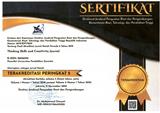Disruption of Libraries as Public Spaces: Dissecting Jurgen Habermas's Thoughts and Digital Public Spaces
DOI:
https://doi.org/10.23887/jfi.v5i3.46177Keywords:
Jurgen Habermas, Perpustakaan, TeknologiAbstract
Jurgen Habermas is second generation German scientist from the Frankfurt school as well as a
person who wants to revise the thoughts of the first generations Frankfurt school figures. His
thoughts on liberation from colonialism (theoretical and social praxis), the natural sciences, social and critical sciences, the neo-Marxist spirit for change, the impasse of the first generations Frankfurt school (enlightenment dialectic) and communicative rationality in language (returning linguistics). The writing uses literature review method, primary data sources are: books and articles related to Jurgen Habermas. Then present in a descriptive narrative. There is a demand for libraries in technology development. Libraries experience a dilemma, the existence of technology will eliminate the dignity of the library as a public space, technology will have an impact on public space. The results of this study, namely: 1) the public space that was once full of liberation ideas was colonized by capitalism; 2) digital public space was born from technological developments; and 3) phenomenon in the 21st century since the birth of social media people no longer read books. In conclusion, that is the library is one of the affected public spaces. However, the challenges of the digital era, libraries must keep up with the era while still carrying out their function to provide information for users because of the function of practical scientific interests.
References
Bernstein, Richard J., ed. 1991. Habermas and Modernity, The MIT Press, Cambridge, Massachusetts Christman.
Creswell, John W. 2017. Reseacrh Design, Pendekatan Kualitatif, kuantitatif, dan Mixed.. (alih bahasa oleh Ahmad Fawaid).Yogyakarta: Pustaka Pelajar.
Endres, Ben. 1996. Habermas and Critical Thinking, http: //www.ed.uiuc. edu/EPS-Yearbook/96_docs/endres.html
Habermas, Jürgen. 1971. Knowledge and Human Interest (asli: 1968, ‘Erkenntnis und Interesse, transl. by Jeremy J. Saphiro), Beacon Press, Boston
_____________. 1973. Theory and Practice (asli: 1971, ‘Theorie und Praxis’, transl by John Viertel), Polity Press, Cambridge.
_____________. 1984. The Theory of Communicative Action, Volume One: Reason and Rationalization of Society (asli: 1981, ‘Theorie des Kommunikativen Handelns, Band I: Handlungsrationalität und gesellshaftliche Rationalisierung’, transl by Thomas McCarthy), Beacon Press, Boston.
_____________. 1990. Moral Consciousness and Communicative Action (asli: 1983, ‘Moralbewusstsein und kommunikativen Handeln’, transl by Christian Lenhart & Shierry Weber Nicholson, introduction by Thomas McCharty), Polity Press, Cambridge.
_____________. Ruang Publik.Yogyakarta:Kreasi Wacana,2010
_____________ Teori Tindakan Komunikatif: Rasio dan Rasionalisasi Masyarakat. Vol 1. Jakarta: Kencana Prenada Media Group,2009
Held, David. 1980. Introduction to Critical Theory, Horkheimer to Habermas, University of California Press, Berkeley
Heath, Joseph. 2003. Communicative Action and Rational Choice, MIT Press, Cambridge.
Howe, Leslie, A. 2000. On Habermas, Wadsworth/Thomson Learning, Belmont Marsh, James L., 2001, Unjust Legality, A Critique of Habermas’s philosophy of law, Rowman & Littlefoeld, Lahman
McCarthy, Thomas. 2006. Teori Kritis Jurgen Habermas. [Penerjemah: Nurhadi]. Yogyakarta: Kreasi Wacana
Mestika Zed. 2007. Metode Penelitian Kepustakaan. Jakarta: Yayasan Obor Indonesia
Downloads
Published
Issue
Section
License
Copyright (c) 2022 Jurnal Filsafat Indonesia

This work is licensed under a Creative Commons Attribution-ShareAlike 4.0 International License.

Jurnal Filsafat Indonesia Undiksha is licensed under a Creative Commons Attribution-ShareAlike 4.0 International License.



